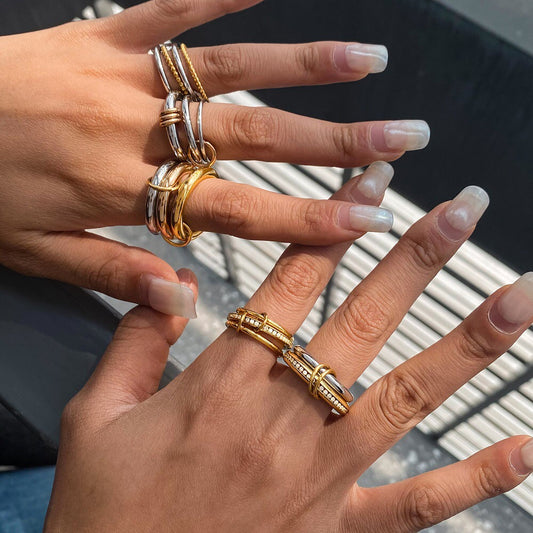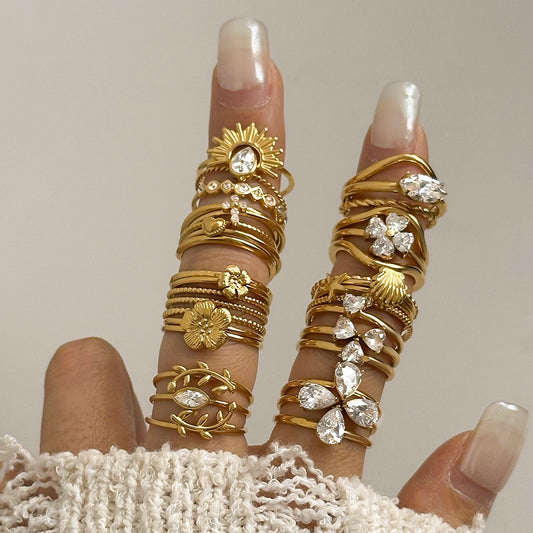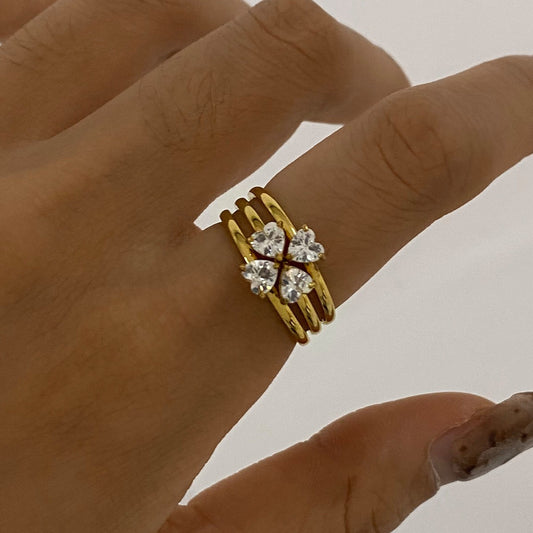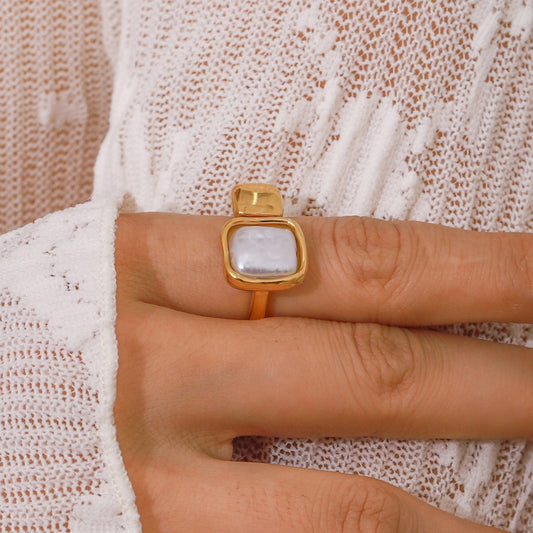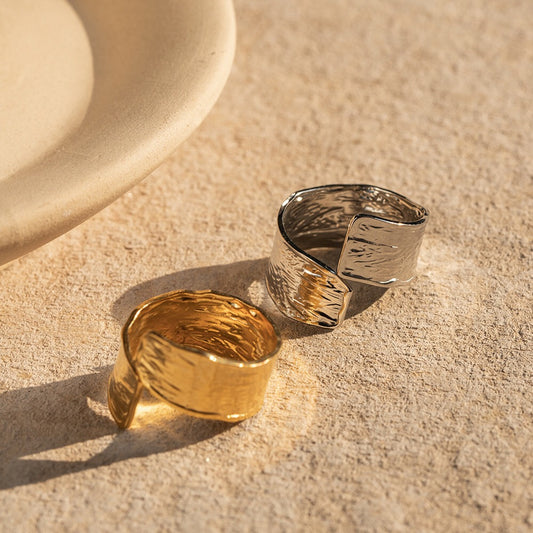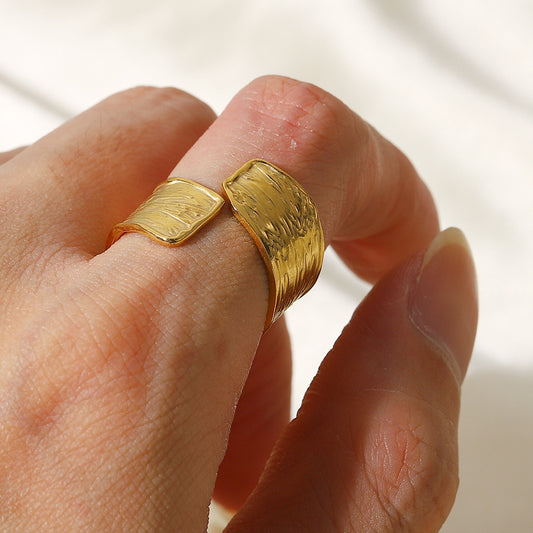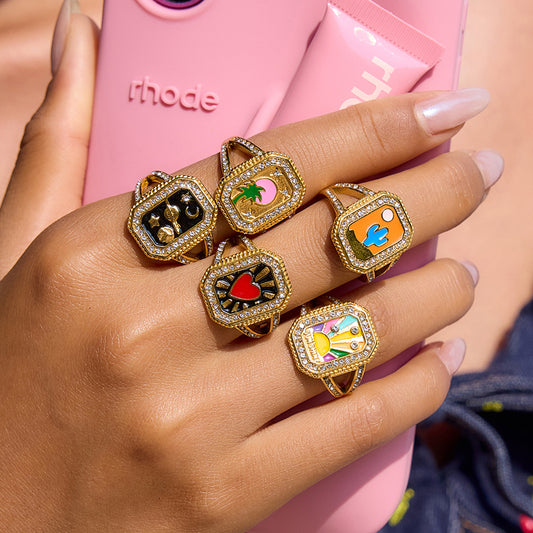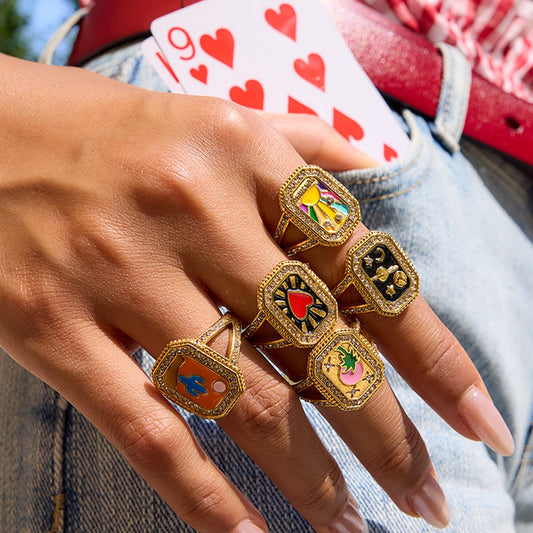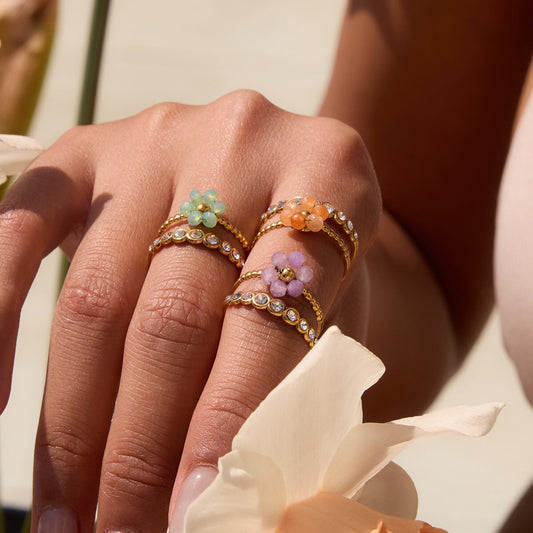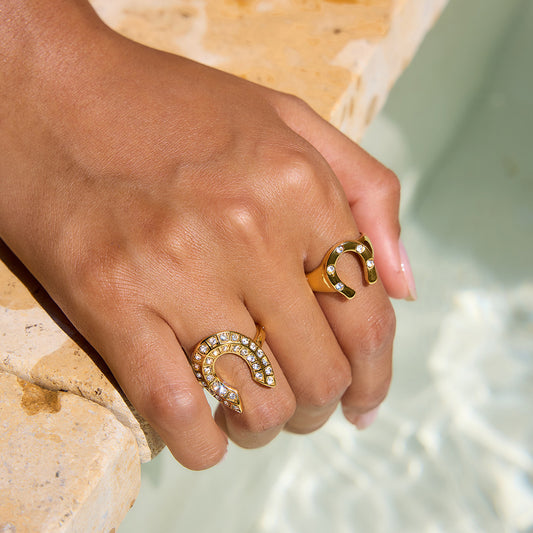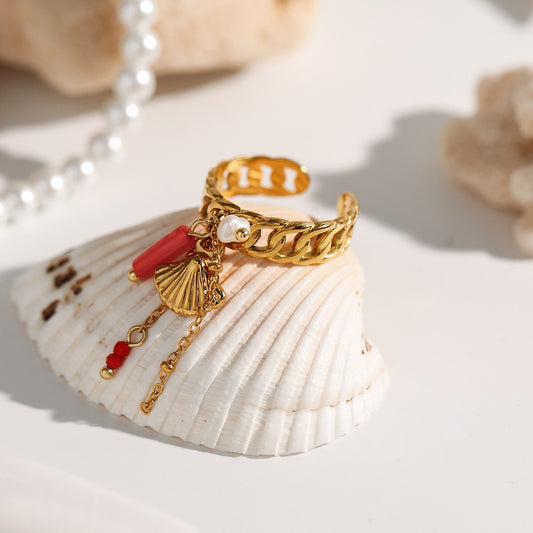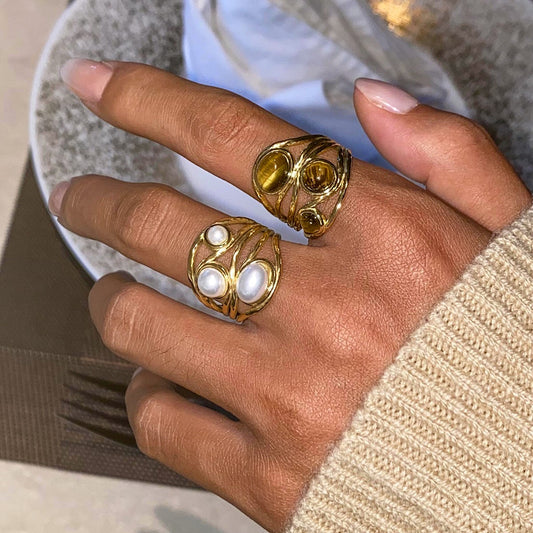A turquoise ring is more than a piece of jewelry—it’s a wearable link to thousands of years of history, culture, and natural wonder. With its vivid blue-green hue (often likened to "sky meeting earth"), turquoise has adorned pharaohs, Indigenous leaders, and style icons for millennia. The global market for Turquoise Jewelry was valued at US$ 245 million in the year 2024 and is projected to reach a revised size of US$ 378 million by 2031. Unlike fleeting trend-driven gems, turquoise carries deep symbolism (protection, wisdom, connection to nature) and a timeless appeal that works for bohemian, minimalist, and classic styles alike. Whether you’re drawn to its cultural roots or its bold aesthetic, a turquoise ring is a statement of individuality and reverence for the past.

What Are Turquoise Rings?
Turquoise rings feature turquoise—a hydrous copper aluminum phosphate mineral known for its distinctive blue, green, or blue-green color. Formed over millions of years in arid regions (often near copper deposits), turquoise is one of the oldest gemstones used in jewelry. To understand its allure, let’s break down its key traits and why it stands out from other colored gemstones.
Core Traits of Turquoise Rings
Turquoise rings owe their enduring popularity to four unique qualities:
-
Iconic Color: Turquoise’s range of hues—from bright sky blue (called "robin’s egg") to deep teal with brown matrix (veins of rock)—is instantly recognizable. No other gemstone captures the "earth-meets-sky" tone that makes turquoise so distinctive.
-
Cultural Significance: For over 6,000 years, turquoise has been revered as a protective stone. Indigenous cultures of the American Southwest see it as a bridge between the physical and spiritual worlds; ancient Egyptians buried it with pharaohs to guard them in the afterlife; Persians used it to ward off evil. This legacy adds emotional weight to every turquoise ring.
-
Versatility: Turquoise pairs beautifully with warm metals (silver, yellow gold) that enhance its earthy tones, making it ideal for everyday wear or special occasions. A simple turquoise silver band works with jeans; a turquoise statement ring elevates a cocktail dress.
-
Unique Character: Most turquoise has natural matrix (dark brown or black veins) that makes each stone one-of-a-kind. Even "clean" turquoise (without matrix) has subtle variations in color—no two turquoise rings are identical.

How Turquoise Rings Differ from Other Blue/Green Gemstone Rings
Turquoise’s cultural heritage and natural character set it apart from similar-looking gems:
-
vs. Amazonite: Amazonite is pale blue-green but lacks turquoise’s depth and matrix. It’s also softer (6–6.5 on the Mohs scale vs. turquoise’s 5–6) and less culturally significant.
-
vs. Chrysocolla: Chrysocolla is bright blue-green but often has a more uniform color and lacks turquoise’s matrix. It’s also more fragile, making it less suitable for everyday rings.
-
vs. Paraiba Tourmaline: Paraiba tourmaline is vivid blue-green but far more expensive (thousands per carat) and lacks turquoise’s earthy, rustic charm. Turquoise offers similar color at a fraction of the cost.
Why Choose a Turquoise Ring?
Turquoise rings resonate with wearers for three powerful reasons: their deep cultural roots, their ability to add warmth to any look, and their symbolic meaning of protection and connection.
Cultural Heritage (Wear a Piece of History)
Turquoise’s legacy is unmatched by most gemstones—and wearing a turquoise ring lets you carry that history with you:
-
Indigenous Craftsmanship: Many turquoise rings (especially those from the American Southwest) are handcrafted by Indigenous artisans using traditional techniques (e.g., silver inlay, stamped metal). These pieces aren’t just jewelry—they’re works of art that honor centuries of tradition.
-
Ancient Symbolism: For anyone drawn to meaningful jewelry, turquoise’s role as a protective stone adds layers of significance. It’s not just a pretty gem—it’s a daily reminder of strength, wisdom, and connection to the natural world.
-
Timeless Appeal: Turquoise has been in style for millennia, and it’s not going anywhere. Unlike trendy gems that feel dated in a year, a turquoise ring will look just as relevant in 10 years—whether you’re wearing it to a festival or a family dinner.

Earthy Color That Elevates Every Outfit
Turquoise’s blue-green hue is uniquely versatile—it complements nearly every color and style:
-
Neutrals (Black, White, Gray): Turquoise pops against neutrals, turning a simple white t-shirt and jeans into a polished look.
-
Warm Tones (Brown, Tan, Rust): Turquoise enhances earthy colors, making it perfect for fall/winter knits or summer linen.
-
Bold Colors (Red, Orange, Yellow): Turquoise creates a striking contrast with warm brights—think a turquoise ring with a red dress for a wedding or party.
A 2024 survey by Bohemian Living found that 92% of turquoise ring owners said their piece "makes even basic outfits feel special"—a testament to its transformative power.
Symbolism of Protection & Connection
For many, a turquoise ring is more than an accessory—it’s a talisman:
-
Protection: Across cultures, turquoise is believed to shield wearers from harm (physical or emotional). Many people wear it during stressful times (e.g., work deadlines, travel) as a reminder of resilience.
-
Connection to Nature: Turquoise’s color evokes the sky, oceans, and forests—making it a favorite for nature lovers. It’s a small way to stay connected to the outdoors, even in busy urban life.
-
Wisdom: Ancient cultures associated turquoise with clarity of thought. Wearing it can feel like a nod to seeking wisdom and making intentional choices.

Popular Styles of Turquoise Rings
Turquoise’s earthy charm shines in a range of designs, from rustic to refined. Here are the most beloved styles to suit every taste:
1. Turquoise Silver Band (Bohemian Classic)
The most iconic turquoise style—rooted in Indigenous craftsmanship:
-
Design: A small to medium turquoise stone (round, oval, or free-form) set in a sterling silver band. Many have hand-stamped silver details (e.g., geometric patterns, feathers) or a simple bezel setting that highlights the stone’s matrix.
-
Best For: Bohemian lovers, everyday wearers, or anyone new to turquoise. Silver enhances turquoise’s blue-green hue and adds a rustic, artisanal feel.
-
Why It’s Loved: It’s the "wardrobe workhorse" of turquoise rings—perfect for pairing with maxi dresses, denim jackets, or layered necklaces. Handcrafted silver turquoise bands also make meaningful gifts, as each one is unique.
2. Turquoise Statement Ring (Bold & Eye-Catching)
For those who want to make a style statement:
-
Design: A large turquoise stone (15mm+) with prominent matrix, set in a thick silver or yellow gold band. Some have additional details like small gemstones (coral, onyx) or intricate metalwork (filigree, repoussé) for extra drama.
-
Best For: Parties, festivals, or anyone who loves bold jewelry. A large turquoise statement ring is the focal point of an outfit—no need for extra accessories.
-
Why It’s Loved: Turquoise’s vibrant color makes it a natural statement gem, and the matrix adds texture and character. Yellow gold settings warm up turquoise’s green tones, while silver keeps it cool and earthy.

3. Turquoise Stackable Bands (Minimalist Layered Look)
For a subtle take on turquoise:
-
Design: Thin bands (1–2mm wide) with tiny turquoise chips or a single small turquoise stone (3–5mm). They’re designed to be stacked with other bands (plain silver, gold, or gemstone) for a customized look.
-
Best For: Minimalists, office wear, or anyone who wants to add a touch of color without being over-the-top. Stack 2–3 with silver bands for a cohesive, understated style.
-
Why It’s Loved: They’re lightweight and versatile—wear them alone for a quiet pop of color, or stack them for a more dynamic look. Tiny turquoise stones still showcase the gem’s unique color, even in small sizes.
4. Turquoise Cocktail Ring (Vintage Glamour)
A retro-inspired style that blends old-world charm with modern elegance:
-
Design: A medium turquoise stone (10–12mm) set in a vintage-style band (e.g., Art Deco geometric patterns, Mid-Century modern curves) in yellow or rose gold. Some have diamond or onyx accents for extra sparkle.
-
Best For: Weddings, anniversary dinners, or anyone who loves vintage fashion. A turquoise cocktail ring adds glamour to a little black dress or a silk blouse.
-
Why It’s Loved: Turquoise was popular in mid-20th-century jewelry (think Old Hollywood starlets), so a vintage-inspired cocktail ring feels nostalgic yet fresh. Gold settings give it a luxe, timeless vibe.
5. Turquoise Birthstone Ring (Personalized Meaning)
Turquoise is the birthstone for December and the 11th wedding anniversary gem—making it a thoughtful personalized choice:
-
Design: A small to medium turquoise stone set in a band with the wearer’s birth month engraving or a tiny accent gemstone (e.g., a December birthstone ring with turquoise and zircon).
-
Best For: Birthday gifts, anniversary presents, or self-gifting. It’s a meaningful way to celebrate a December birthday or honor a long marriage.
-
Why It’s Loved: Birthstone jewelry feels personal, and turquoise’s symbolic meaning adds extra depth. A turquoise birthstone ring is a daily reminder of the month (or milestone) it represents.
How to Choose the Perfect Turquoise Ring
Selecting a turquoise ring requires balancing quality, style, and authenticity. Follow these steps to find your ideal piece:
Step 1: Learn to Identify Authentic Turquoise
Turquoise is often imitated (e.g., dyed howlite, plastic, or glass), so knowing what to look for is key:
-
Color: Authentic turquoise has a natural, uneven color—no two stones are identical. Avoid stones with perfectly uniform blue or green (they’re likely dyed).
-
Matrix: Most genuine turquoise has matrix (dark veins)—this is a sign of authenticity, not a flaw. The pattern of matrix is unique to each stone.
-
Hardness: Turquoise rates 5–6 on the Mohs scale— it can scratch glass but will be scratched by a steel nail. Imitations like howlite are softer (4.5–5) and scratch more easily.
-
Weight: Authentic turquoise is denser than imitations—hold it in your hand; it should feel heavier than a plastic or glass "turquoise" ring of the same size.
Always buy from a reputable jeweler who guarantees authenticity—ask for a certificate if you’re purchasing a high-value piece.
Step 2: Choose the Right Turquoise Color & Matrix
Turquoise’s appearance is a matter of personal taste—there’s no "perfect" color or matrix:
-
Color Preference: Do you love bright sky blue (ideal for silver settings) or deep teal (perfect for gold)? Bright blue turquoise is more traditional, while teal with matrix has a rustic, bohemian feel.
-
Matrix Preference: Some prefer "clean" turquoise (minimal matrix) for a sleek look; others love bold matrix patterns for character. Matrix adds uniqueness—embrace it!
Step 3: Pick a Metal That Complements Turquoise
The metal setting enhances turquoise’s tone—choose based on your style:
-
Sterling Silver: The classic choice—silver’s cool tone makes turquoise’s blue hues pop. It’s perfect for bohemian, rustic, or everyday styles.
-
Yellow Gold: Warms up turquoise’s green tones, creating an earthy, luxurious look. Ideal for vintage-inspired or formal rings.
-
Rose Gold: Adds a romantic twist—rose gold softens turquoise’s blue-green hue, making it perfect for feminine, modern styles.
Step 4: Match Style to Your Lifestyle
-
Everyday Wear: Opt for a simple silver band with a small turquoise stone (bezel-set to protect the gem) or stackable bands. Avoid large statement rings that may catch on clothing.
-
Special Occasions: Choose a cocktail ring or statement ring with gold and accent gemstones. These can handle occasional wear and add glamour to formal looks.
-
Active Lifestyles: Stick to bezel-set turquoise (no prongs to catch) or small stackable bands. Turquoise is softer than diamonds, so avoid high-impact activities while wearing it.
Step 5: Set a Realistic Budget
Turquoise rings range in price from $50 (small dyed howlite/turquoise-plated rings) to $5,000+ (large, high-quality natural turquoise in handcrafted silver or gold). Here’s how to allocate:
-
Budget Under $200: Small natural turquoise (with matrix) in sterling silver, or stackable bands with turquoise chips.
-
Budget $200–$1,000: Medium natural turquoise (10–12mm) in handcrafted silver or 10k gold, with minimal accent gemstones.
-
Budget Over $1,000: Large, high-quality natural turquoise (15mm+) in 14k+ gold or handcrafted Indigenous silver, with intricate details or rare gemstone accents.
How to Care for a Turquoise Ring (Protect Its Beauty)
Turquoise is softer (5–6 on the Mohs scale) and more porous than other gemstones, so proper care is essential to keep it looking its best:
Daily Care Tips
-
Remove Before Activities: Take off the ring before swimming (chlorine can discolor turquoise), showering (water can seep into pores and dull color), working out (sweat can damage the setting), or doing chores (cleaning products scratch the gem).
-
Avoid Harsh Substances: Keep turquoise away from perfume, hairspray, lotion, and makeup—these can stain or discolor the gem. Apply beauty products first, then put on your ring.
-
Handle Gently: Turquoise can chip if dropped or hit against hard surfaces (e.g., countertops, doorknobs). Be careful when putting on/taking off gloves or handling heavy objects.
Weekly Cleaning
-
Mix lukewarm water with a drop of mild, unscented soap (like baby shampoo) in a small bowl.
-
Dip a soft cloth (not a toothbrush—bristles can scratch) into the soapy water and gently wipe the turquoise and setting.
-
Rinse the cloth with clean water and wipe the ring again to remove soap residue.
-
Pat dry immediately with a soft, absorbent cloth—never air-dry turquoise, as water can seep into its pores.
Storage Tips
-
Store Separately: Keep the turquoise ring in a soft jewelry pouch or padded compartment to avoid scratching from harder gemstones (e.g., diamonds, sapphires) or metals.
-
Avoid Humidity: Store in a cool, dry place (not the bathroom)—humidity can cause turquoise to absorb moisture and lose its color.
-
Protect from Light: Prolonged exposure to direct sunlight can fade turquoise—store it in a dark pouch or drawer when not in use.
Frequently Asked Questions About Turquoise Rings
Q1: Will turquoise fade over time?
A: Yes—turquoise can fade if not cared for properly. Factors that cause fading include:
-
Prolonged exposure to sunlight (UV rays break down its color).
-
Contact with water, perfume, or cleaning products (they seep into pores and discolor the gem).
-
Lack of use (turquoise benefits from occasional skin oils, which keep it hydrated—dry storage can make it dull).
With proper care (avoiding sunlight, water, and chemicals), your turquoise ring will retain its color for decades.
Q2: Is turquoise a good choice for an engagement ring?
A: It depends on your lifestyle! Turquoise is softer than diamonds, so it’s best for couples who don’t work with their hands (e.g., office jobs) and are willing to take extra care. If you love turquoise’s symbolism and style, opt for a bezel-set design (to protect the gem) and avoid wearing it during high-impact activities. Many couples choose turquoise engagement rings for their uniqueness and cultural meaning—just be prepared to care for it gently.
Q3: What’s the difference between natural and stabilized turquoise?
A: Natural Turquoise: Unprocessed, with no treatments. It’s porous and may have visible matrix. High-quality natural turquoise is rare and expensive.
Stabilized Turquoise: Treated with a clear resin to fill pores, making it more durable and less likely to fade or absorb water. Most turquoise used in jewelry today is stabilized—it’s more affordable and practical for everyday wear.
Stabilized turquoise is not "fake"—it’s still natural turquoise, just treated to improve its durability. Ask your jeweler if the turquoise is natural or stabilized before buying.
Q4: Can turquoise rings be resized?
A: Yes—but with caution. Turquoise rings can be resized by a skilled jeweler, but the process requires care to avoid damaging the gem:
-
Simple Silver Bands: Easy to resize—jewelers can cut and solder the metal without risking the turquoise.
-
Complex Settings: Rings with intricate metalwork or accent gemstones are harder to resize—adjusting the band may loosen small stones or damage the setting.
Always choose a jeweler with experience working with turquoise—they’ll know how to resize your ring safely.
Q5: How do I clean tarnished silver on a turquoise ring?
A: Tarnish (dark spots on silver) is common with sterling silver turquoise rings, but it’s easy to fix—without harming the turquoise. Here’s how:
-
Avoid Harsh Cleaners: Never use silver polish (like Brasso) or ultrasonic cleaners on turquoise rings—polish chemicals can seep into the turquoise’s pores and discolor it, while ultrasonic vibrations can loosen the gem from its setting.
-
Use a Mild Silver Cleaner for Tarnish: Opt for a non-abrasive, ammonia-free silver cleaner (look for brands labeled "safe for gemstones") or make a DIY solution: mix 1 cup warm water with 1 tablespoon baking soda and 1 piece of aluminum foil.
-
Target the Silver Only: Dip a soft cloth (not the turquoise!) into the cleaner or wrap the foil around your finger, gently rubbing the tarnished silver areas. Avoid getting the cleaner on the turquoise—if it does, wipe it off immediately with a damp cloth.
-
Rinse and Dry: After removing tarnish, wipe the silver with a damp cloth to remove residue, then pat the entire ring dry with a soft towel. Focus on drying the turquoise thoroughly—moisture is its biggest enemy.
For regular upkeep, wipe the silver band with a anti-tarnish cloth (available at jewelry stores) once a week—this prevents tarnish from building up in the first place.
Q6: Is turquoise jewelry ethical?
A: Ethical sourcing for turquoise varies by region, but there are steps to ensure your ring supports responsible practices:
-
Look for Indigenous-Made Pieces: Turquoise from the American Southwest is often mined and crafted by Indigenous artisans (e.g., Navajo, Zuni, Hopi) who have stewarded these lands and traditions for centuries. Buying directly from Indigenous-owned brands ensures fair compensation and honors cultural heritage.
-
Ask About Mining Practices: Reputable jewelers will share where their turquoise is mined. Avoid turquoise from mines linked to deforestation, water pollution, or child labor (common in some unregulated international mines).
-
Choose Recycled Silver: Many ethical brands use recycled sterling silver for turquoise ring bands, reducing the environmental impact of mining new silver.
By prioritizing ethical sourcing, you’re not just buying a ring—you’re supporting communities and protecting the planet, which aligns with turquoise’s symbolic connection to nature.
Conclusion: Wear a Piece of Earth’s Story
A turquoise ring is more than jewelry—it’s a bridge between ancient traditions and modern style, between nature’s beauty and personal meaning. Its vivid blue-green hue carries the spirit of the sky and earth, while its cultural legacy reminds us of the wisdom and craftsmanship of generations past.
Whether you’re wearing a handcrafted silver turquoise band to a festival, a minimalist stackable ring to the office, or a vintage cocktail ring to a wedding, this gemstone doesn’t just adorn your finger—it tells a story: of resilience (as a protective talisman), of connection (to nature and culture), and of individuality (in a world of mass-produced accessories).
With proper care—protecting it from water, sunlight, and harsh chemicals—your turquoise ring will age gracefully, its color deepening slightly over time (a process called "patina" that many collectors prize) and its matrix patterns becoming even more distinct. It may even become an heirloom, passed down with stories of the moments it accompanied: a first date, a career milestone, a family gathering.
At its core, a turquoise ring is a celebration of the extraordinary in the everyday. It’s a reminder that beauty doesn’t need to be flashy to be meaningful—and that some of the most precious things in life are rooted in history, nature, and intention.
Here’s to wearing earth’s charm on your finger—one turquoise ring at a time.






